Infill in 3D Printing: Definition, Main Parts, and Different Types
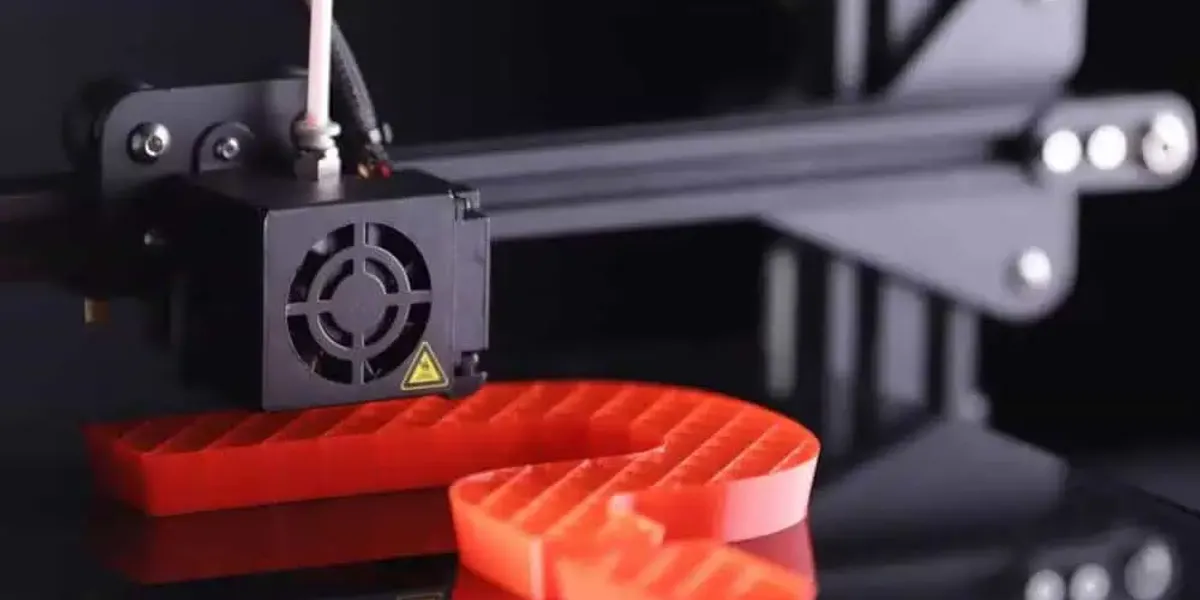
This article will elucidate the concept of 3D printing infill, explore methods for choosing the appropriate infill pattern and density, and detail the array of available infill patterns.
This article was first published on
xometry.pro3D printing infill refers to the inner framework of a 3D printed component, which can be crafted using a variety of shapes. Its primary objective is to enhance part efficiency in terms of weight, strength, and print duration. There are numerous infill patterns.
What is Infill in 3D Printing?
In 3D printing, “infill” denotes the internal structures present within the majority of 3D printed components. Unlike certain manufacturing techniques such as injection moulding, which necessitate either full solidity or complete hollowness, parts produced via fused deposition modelling (FDM) 3D printing offer flexibility in employing diverse structural patterns that partially occupy the interior space enclosed by the outer printed walls.
What is the Purpose of Infill in 3D Printing?
In 3D printing, infill serves to economize both printing time and material by establishing a lattice structure within a printed part. Printing parts with full density is often unnecessary, leading to material wastage. Infill can be strategically positioned to reinforce areas where the part experiences the highest loads, with higher infill densities indicating a greater percentage of infill material.
What Are the Key Elements of Infill in 3D Printing?
A standard 3D printed part consists of an outer shell with a predetermined thickness. Enclosed within this shell, the infill structure remains unseen upon completion of the print. Infill is evenly dispersed throughout the part and is typically printed at higher speeds than the outer shell to expedite printing. Moreover, the lattice structure of infill is thinner compared to the shell.
What Are the Different Types of Infill in 3D Printing?
Various types of 3D printer infill patterns are utilized to achieve the common goal of reducing print time and material consumption. Below are several examples of prevalent 3D printing infill patterns:
- Concentric
- Grid
- Linear
- Gyroid
- Octet
- Lightening
- Triangular
- Tri-Hexagon
- Cubic
- Cross
Concentric Infill Pattern
The concentric 3D printing infill stands out as one of the quickest patterns to print, consuming minimal material. However, this efficiency compromises part strength, particularly when subjected to loads in the x or y-directions. Compared to other infill types, the concentric pattern exhibits reduced strength.
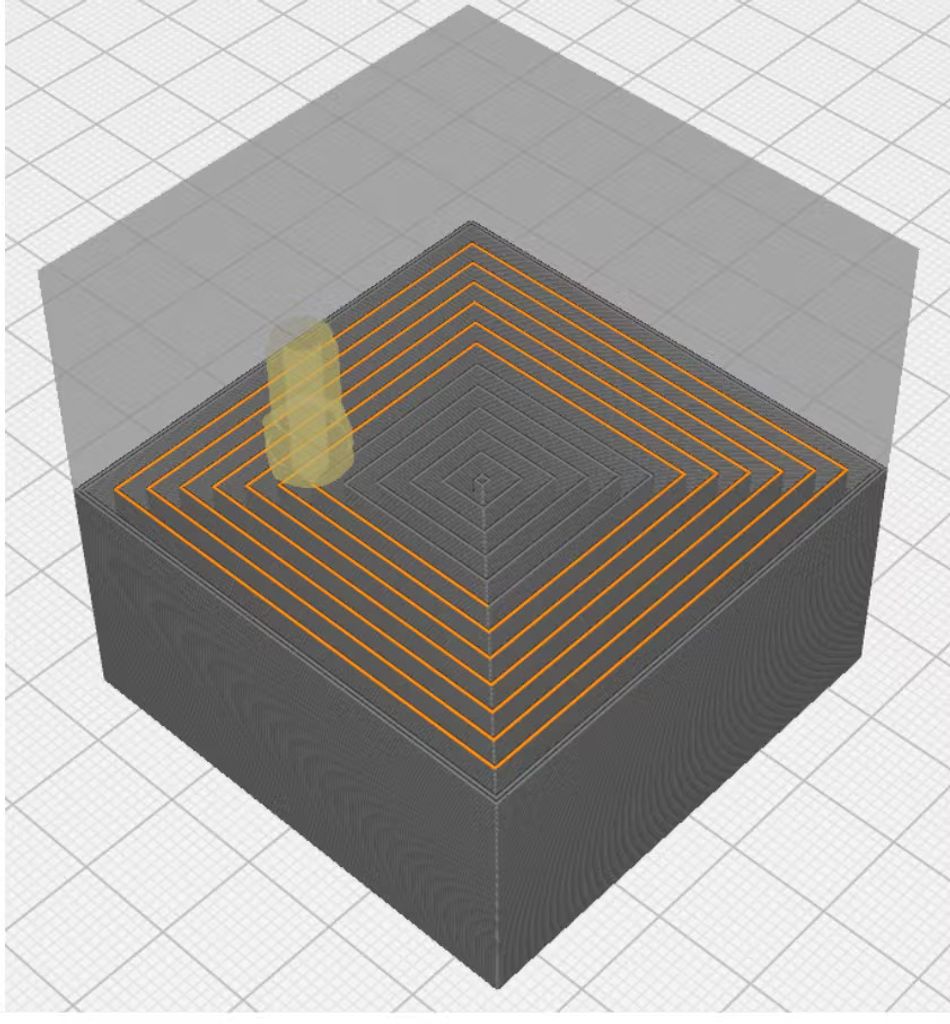
Grid Infill Pattern
The grid stands as one of the most prevalent infill types, characterized by a cubic grid pattern where plastic is deposited, intersecting at 90-degree angles. This pattern is particularly suitable for prints featuring expansive, level surfaces. However, gridded infill patterns may lead to nozzle clogging due to the overlapping lines within the same layer.

Line Infill Pattern
Line infill contains multiple parallel lines per layer, intersecting the preceding layer at a 90-degree angle. Unlike some patterns, lines do not intersect on the same layer, enhancing part strength in two dimensions. Line infill is slightly faster than grid and triangular patterns.
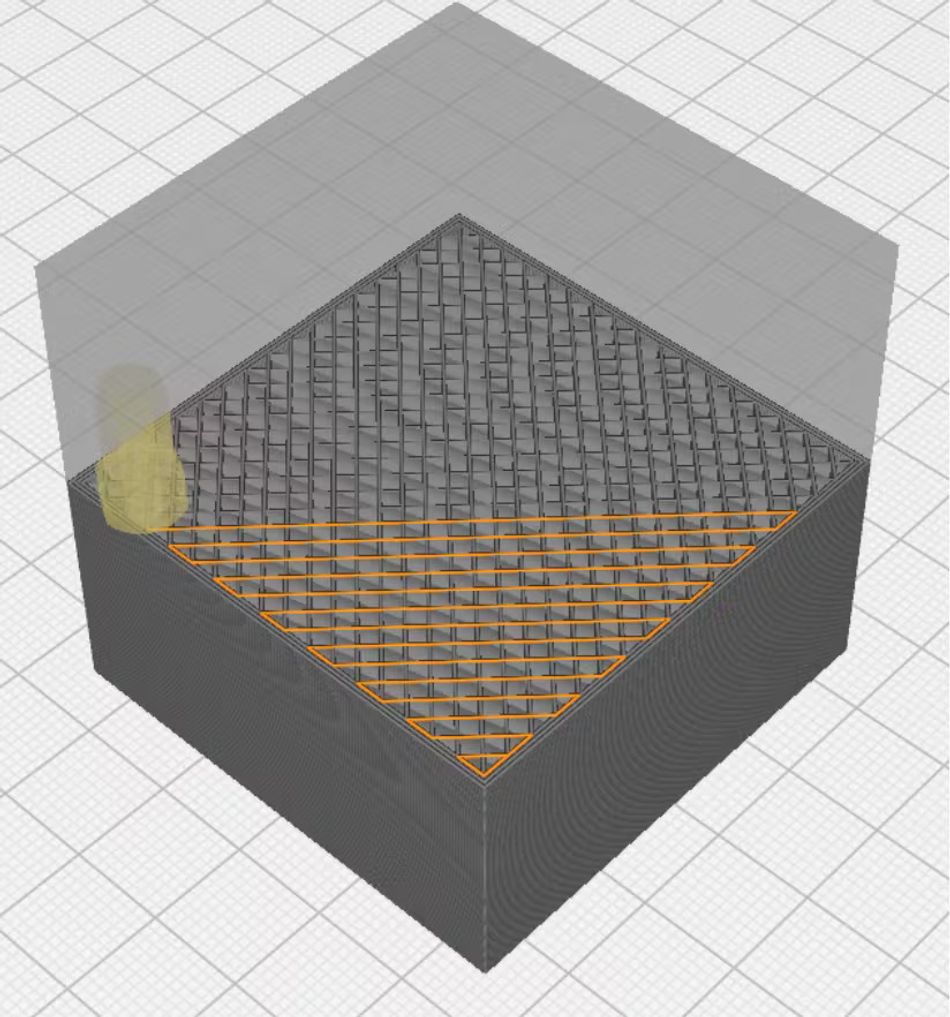
Gyroid Infill Pattern
The gyroid 3D printing infill pattern generates alternating wavy lines or curves, contributing to its distinct appearance. Although this pattern requires more time to print compared to others, its unique internal structure offers nearly isotropic mechanical properties. While prints may remain weaker on the z-axis, the gyroid pattern enhances shear strength along the x and y-axes. Additionally, this infill pattern is well-suited for use with flexible materials.
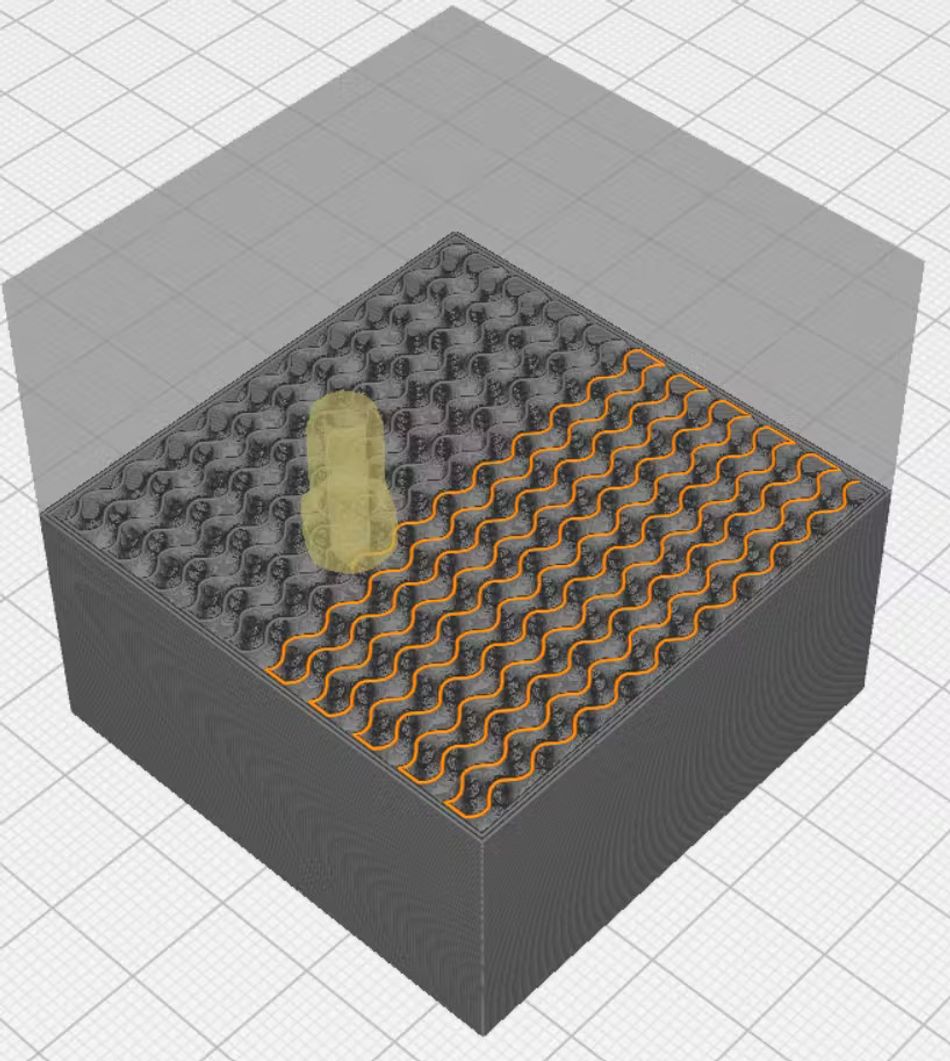
Octet Infill Pattern
The octet 3D printing infill pattern forms tetrahedral (pyramid-like) volumes within the part, making it ideal for components with expansive horizontal surfaces. The tapered nature of these pyramid-like volumes enables smaller gaps between infill walls, reducing the likelihood of material sagging and allowing for shorter span distances. Consequently, improved top surfaces can be attained without necessitating an increase in infill density.
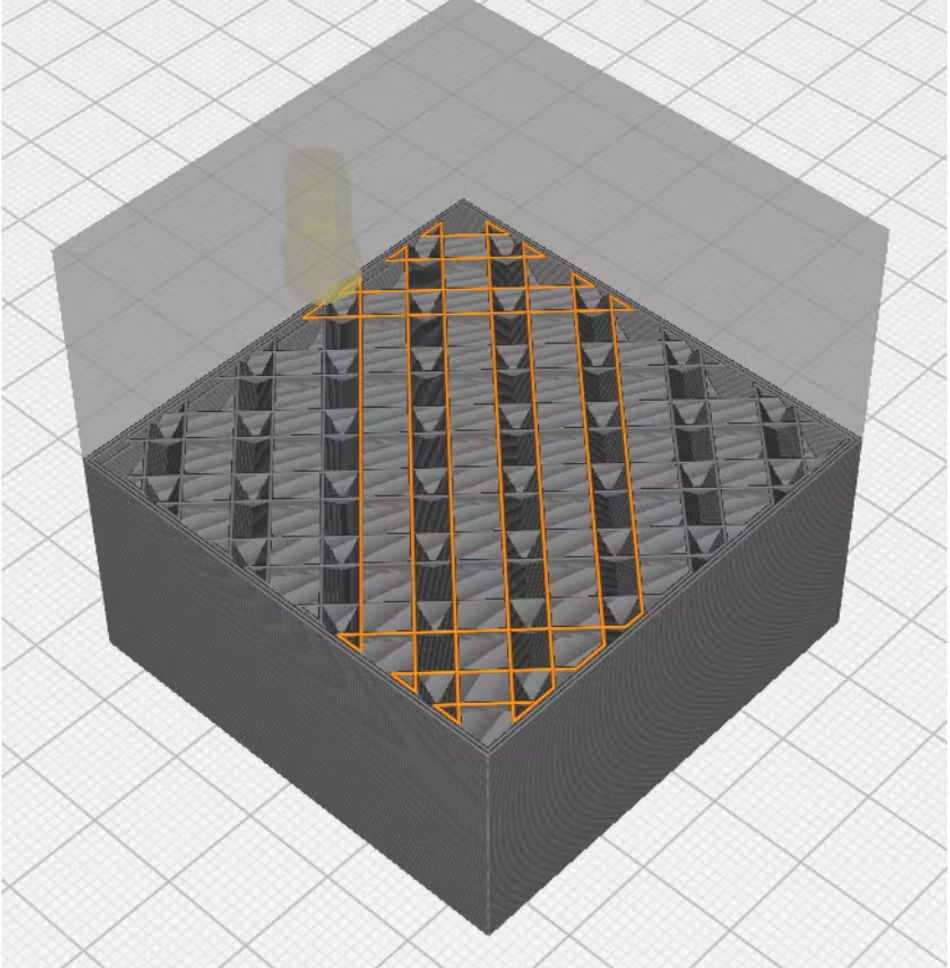
Lightning Infill Pattern
This distinctive infill type prioritizes the fastest print time, albeit compromising part strength. Supports are incorporated in a lightning bolt structure, strategically positioned solely where essential. Components primarily consist of shells, except in areas requiring support for horizontal features or internal overhangs.
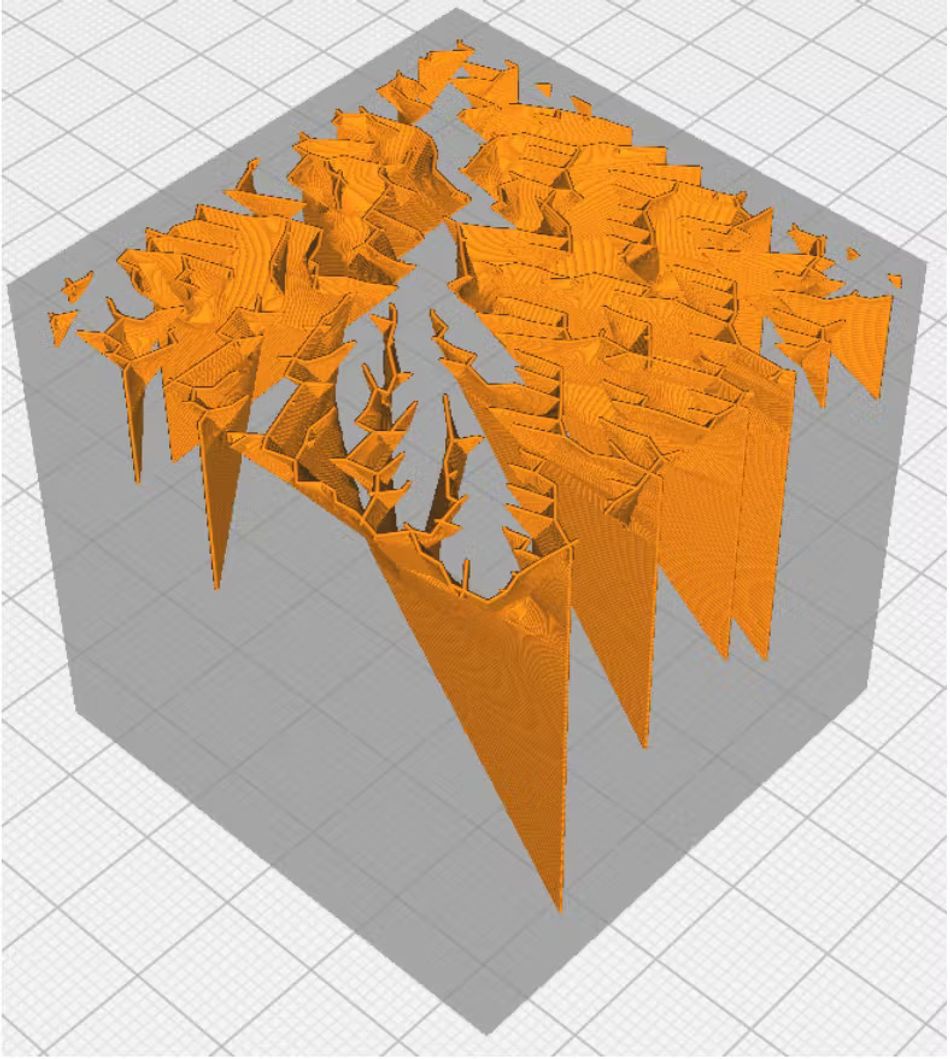
Triangular Infill Pattern
The triangular 3D printing infill pattern deposits plastic in a triangular grid, intersecting at 60-degree angles. It is well-suited for parts featuring extensive, level surfaces and offers performance comparable to the grid pattern. However, the triangular infill may lead to nozzle clogging due to the intersecting lines within the same layer.

Tri-Hexagon Infill Pattern
The tri-hexagon infill pattern is renowned for its exceptional strength. Similar to the grid and triangular infill types, it forms a hexagonal pattern interspersed with triangles by crossing over itself. However, the crossing of lines within the same layer often leads to nozzle clogging during printing.

Cubic Infill Pattern
The cubic infill type innovatively forms cubic volumes within the part by adopting a layered pattern reminiscent of triangular infill. Each subsequent layer is strategically offset to construct enclosed cube-shaped volumes within the part. These cubic volumes are precisely oriented, balanced on a single corner, thereby bolstering structural integrity.
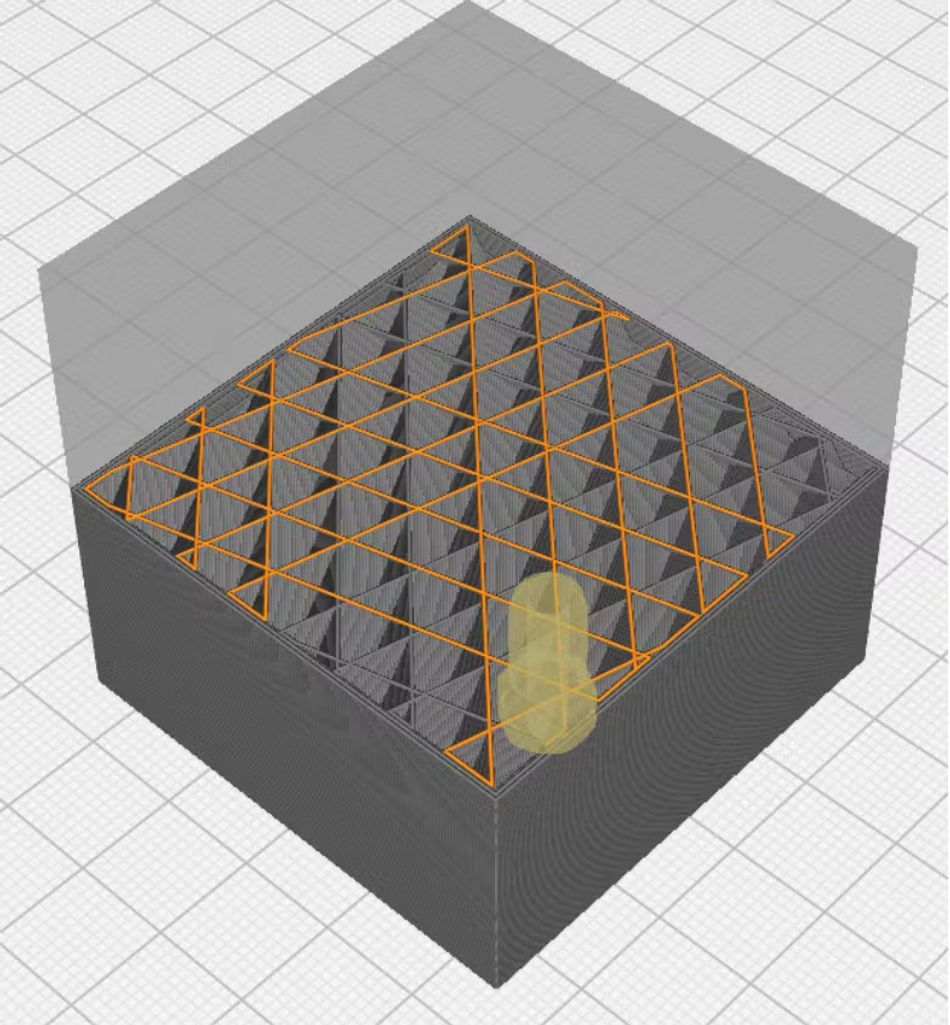
Cross Infill Pattern
The cross pattern produces multiple cross shapes as infill within the 3D printed part. This infill pattern is well-suited for flexible part shapes, allowing for bending and twisting. However, it may not be optimal for more rigid plastics. Moreover, an alternative 3D version of the cross is available to bolster the part’s strength further.
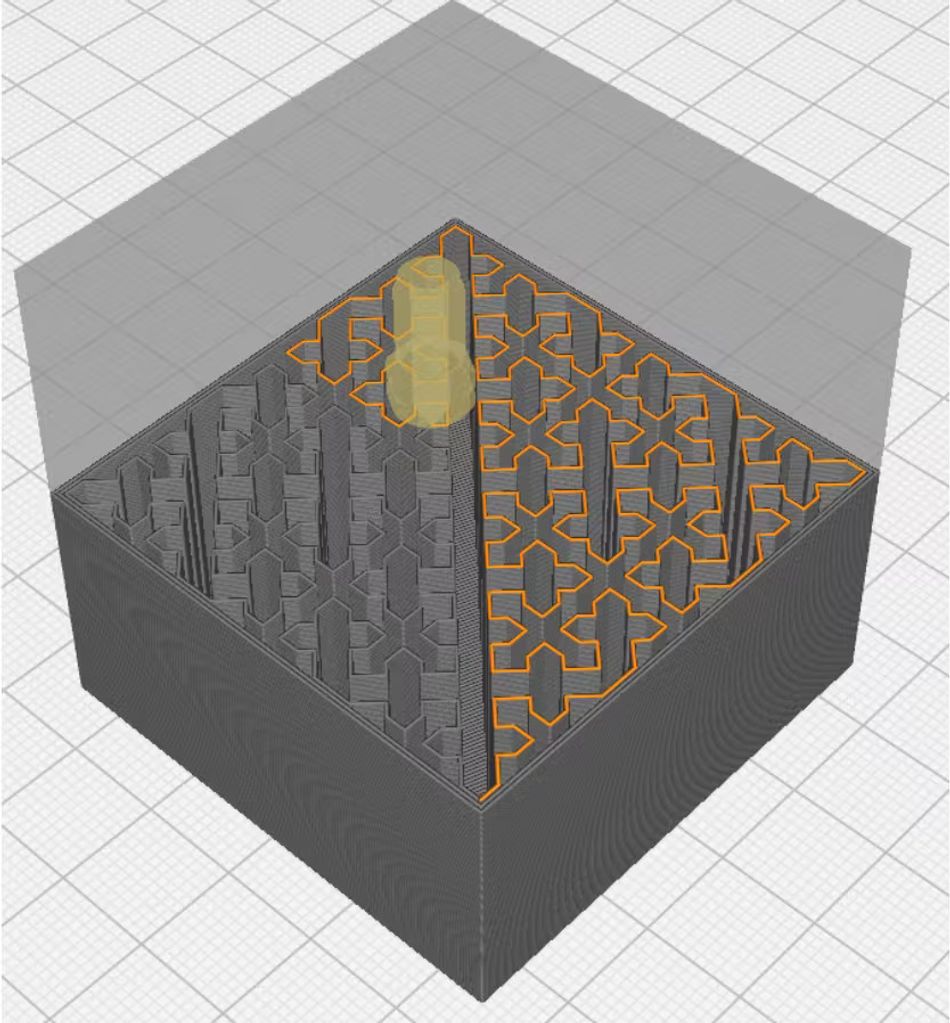
What is an Optimal Infill Density?
Typically, an infill density ranging from 20% to 50% is considered advantageous. Below 20%, parts tend to become flimsy, while exceeding 50% leads to extended printing times and excessive material consumption.
How Does Infill Pattern Choice Affect the Overall Aesthetics of a 3D Printed Part?
The choice of infill pattern can significantly impact the visual appearance of a 3D printed part. Some infill patterns, such as grid or concentric, may result in a uniform and aesthetically pleasing internal structure, while others, like gyroid or organic patterns, can create visually intricate and unique textures. Additionally, infill density and pattern can affect the transparency, surface finish, and overall perceived quality of the finished part.
What Are the Infill Patterns That Maximize the Strength of the Part?
Several infill patterns are known for maximizing the strength of 3D printed parts. Patterns such as honeycomb, tri-hexagon, and gyroid are popular choices for enhancing structural integrity due to their uniform distribution of material and efficient load-bearing capabilities.
But the print orientation also plays a major role in the strength of the part. FDM parts exhibit reduced strength along the z-axis because of weaker interlayer bonding. When a load is applied in the z-direction, the primary factor influencing its tensile strength is the quality of interlayer bonding, with the infill percentage having minimal impact in this scenario.
How to Choose the Best Infill Pattern
The process of selecting the optimal infill pattern involves several steps:
- Evaluate the requirements of the part and determine the necessary infill percentage.
- Consider your available resources, such as material and time per part.
- Narrow down the infill patterns that align with your requirements and resources.
- Choose the most suitable infill pattern for your part.
Selecting the ideal infill pattern often involves experimentation. Conducting trial prints on small parts can help determine the best settings. Generally, opting for simpler patterns like grid or line patterns tends to yield satisfactory outcomes.
Is Infill Important for 3D Printing?
Yes, infill plays a crucial role in 3D printing. It ensures the viability of printing certain parts by providing support for otherwise unsupported surfaces in the design. Infill also enhances strength where necessary, striking a balance between print time and material usage. While some parts can be printed without infill, such as hollow shells like vases, they are generally unsuitable for structural applications due to their lack of internal support.
Conclusion
The article covers the significance of infill in 3D printing, outlines various types of infill patterns available, and offers guidance on pattern selection.
Xometry offers extensive manufacturing capabilities, including 3D printing services and value-added options for prototyping and production requirements. Simply upload your CAD file to receive an instant quote for your 3D print.

